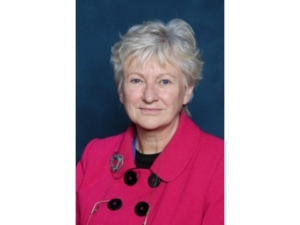 Professor Angela Little is originally from Port le Moirrey, where her father was headmaster of Rushen Primary School. Education proved to be a central theme in Professor Little’s illustrious academic career, including the chair of Education and International Development at the University of London and being involved in international bodies advising on education matters throughout the world.
Professor Angela Little is originally from Port le Moirrey, where her father was headmaster of Rushen Primary School. Education proved to be a central theme in Professor Little’s illustrious academic career, including the chair of Education and International Development at the University of London and being involved in international bodies advising on education matters throughout the world.
In addition to the Introduction for the Rushen Heritage Trust’s project, ‘Living With the Sea’, Professor Little provided a chapter about the development of education, particularly in Port le Moirrey, and more generally in the south of the Island. It was this chapter which provided the basis for her presentation, Education for All… and the Few: schooling in Port St Mary 1829-1979. However, her researches took her back to the comments of Bishop (and Governor) Isaac Barrow in 1663, that “At my coming into the island, I found the people for the most part loose and vicious in their lives, rude and barbarous in their behaviour . . .” His answer to this was compulsory education for both boys and girls. With news of a new Castle Rushen High School to be developed starting a few years hence, Professor Little’s presentation also took us forward into the future.
What was apparent in Professor Little’s presentation was her surprise and delight at discovering so many unexpected developments in an area which she knows – or thought she knew! – so well. These included education establishments which have left no physical trace but have emerged from old photographs, and the 1910 Port le Moirrey schools ‘crisis’ which attracted much coverage in the Island’s press at the time. The crisis was in relation to providing secondary education.
With Professor Little’s interest in the Manx language, she noted that the Rushen Girls Choir conducted by Miss Ella Marshall had performed Manx songs at a concert for the International Celtic Congress in the Island in 1921, and also included a photograph of the staff of Castle Rushen High School, amongst whom was Jack Gell (Juan y Geill), but reported sadly that she had not known of his involvement with the Manx language at the time.
Having provided such an interesting and informative insight into the development of education in Port le Moirrey and the south, Professor Little said that she will also be working with Peel Heritage Trust to broaden the scope of research with the history of education in the west of the Island, so that will be something to look out for as it develops.
Gura mie mooar ec yn Olloo Little son loayrtys feer symoil va soilshaghey magh y ronsaght jeant eck ‘sy chooish. Very grateful thanks are due to Professor Little for a very interesting talk which demonstrated the research undertaken by her into the subject.
